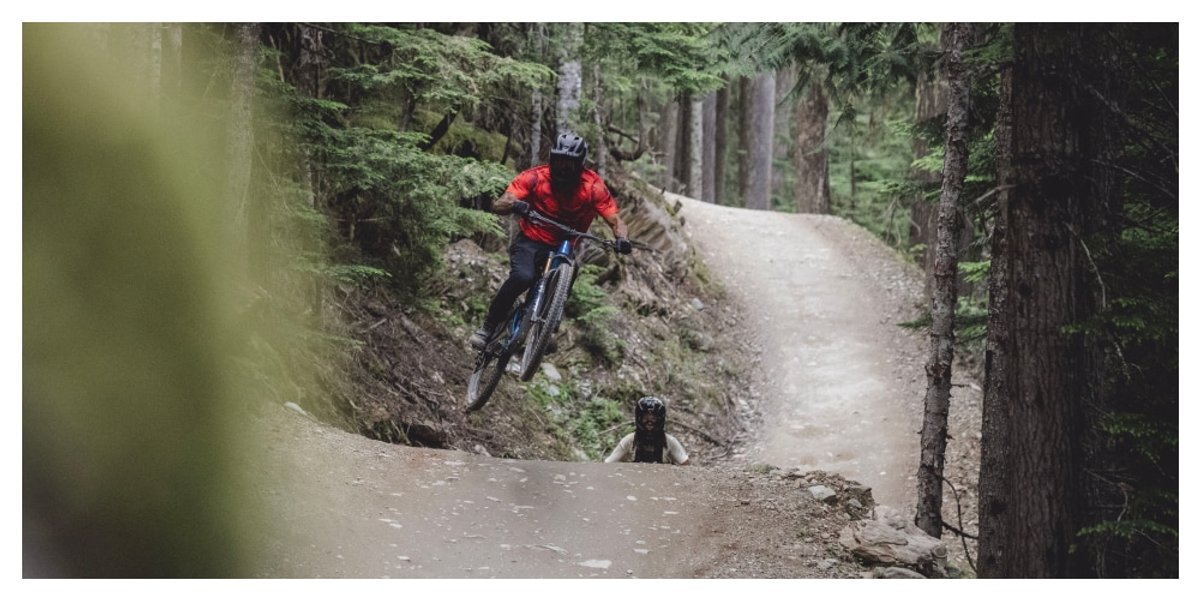
Bike Buying Guide
Understand The Differences & Choose The Right One For You
Whether you’re a newcomer to cycling, looking for your next upgrade, or expanding your riding disciplines, Backcountry has all the bikes and professional advice you need to find the best wheels for you.
We’ll review the fundamental qualities of each bike to help you dial in your decision. But there are a few other things to consider before buying your next bike.
- Your riding style: The best bike for you depends on your preferred type of cycling, your riding skillset, and what terrain you have access to.
- Bike capability: Your bike should deliver your desired performance in the conditions for which it was designed.
- Fit: This may seem like an obvious consideration, but many new bike owners need expert advice to nail good bike fit. Talk to a Gearhead & get set up on a bike that’s your size.
- Accessories & upgrades: Complete your ride with the toolkits and gear improvements to make it one of a kind.
Bike Types for You
There are two main types of bikes: on-road and off-road. From there, it gets a little murkier, but typically bikes are designed to optimize your riding experience either on pavement or off-road surfaces. Luckily, the nomenclature does a good job of spelling out what each bike does.
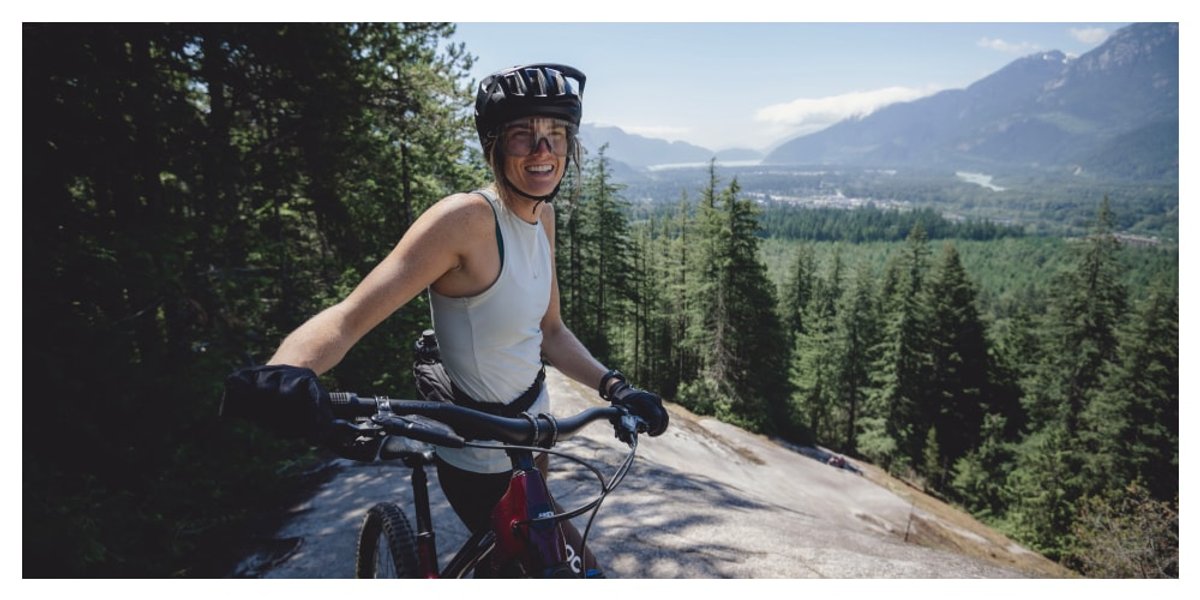
Mountain Bikes
Saddle up a mountain bike (MTB) and you may never want to step off of it. These rigs maximize your fun on trails, from the blisteringly fast cross-country singletracks to the jumps, ramps, and big-berm features of enduro and freeride. The frame design, geometry, suspension, and wheel/tire combo of each type of MTB optimize them for their particular jobs.
If you want to deep dive into the particulars of each option, check out our How To Choose A Mountain Bike article.
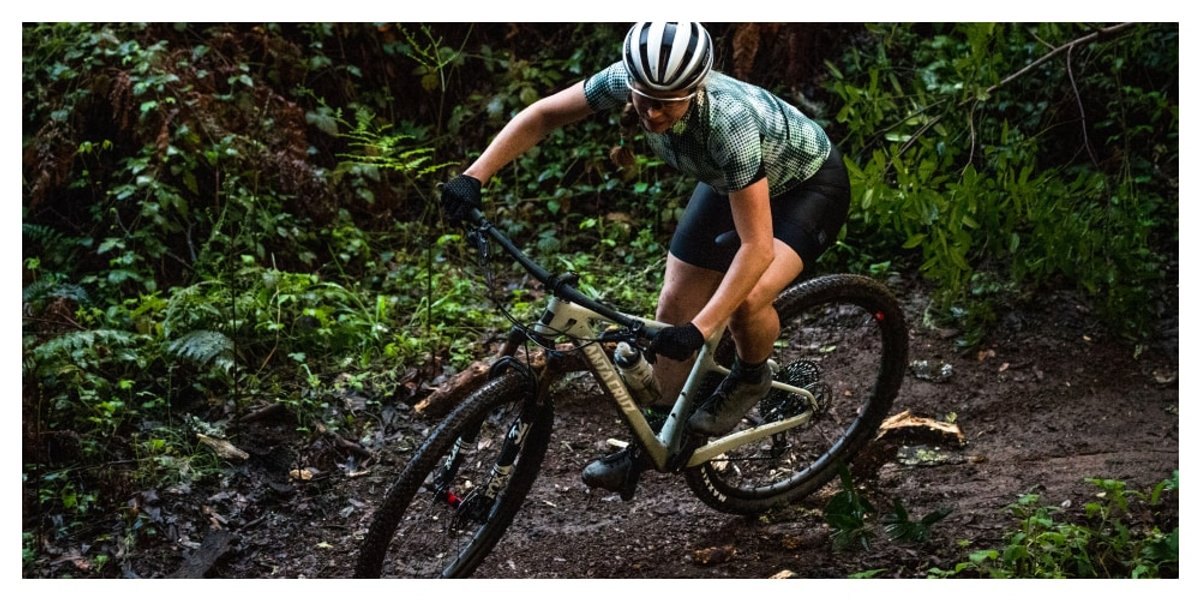
Cross-Country Mountain Bikes
Often known as ‘XC’ bikes, these rigs are either full-suspension (suspension fork in front, rear suspension shock in back) or hard-tail (without a rear suspension). XC suspension travel is short at around 100–120mm in both front and rear, and the overall bike weight is low, so you can rip the climbs and accelerate on flat singletrack.
- Ride Quality: Responsive, rapid under acceleration & nimble
- Geometry: Compact & forward-feeling position with a long reach
- Best For: Fast singletrack with mild to moderate features & loads of climbing
Buy a cross-country mountain bike if you prioritize fitness and high-power cycling, live near rolling hills or long climbs, and have trail networks with less rowdy descent options.
Trail Mountain Bikes
Arguably the most versatile type of MTB, trail bikes are easy to get along with and a lot of fun to ride both up and down the mountain. Their moderate suspension travel of 130–150mm is just right for ascending and descending alike. These rigs will give you everything you need to roll over heavily rooted trail sections or rock garden chunder and even huck a few gaps with confidence.
- Ride Quality: Balanced, plush & playful
- Geometry: Slack head tube, shorter reach & taller stack for balance and efficiency
- Best For: Gobbling up moderate trail features, confident play over most MTB trails, and pedaling up the mountains (no shuttle needed)
Buy a trail mountain bike if you’re after a do-it-all rig that handles trail obstacles supremely well and offers a solid platform for pedal efficiency.
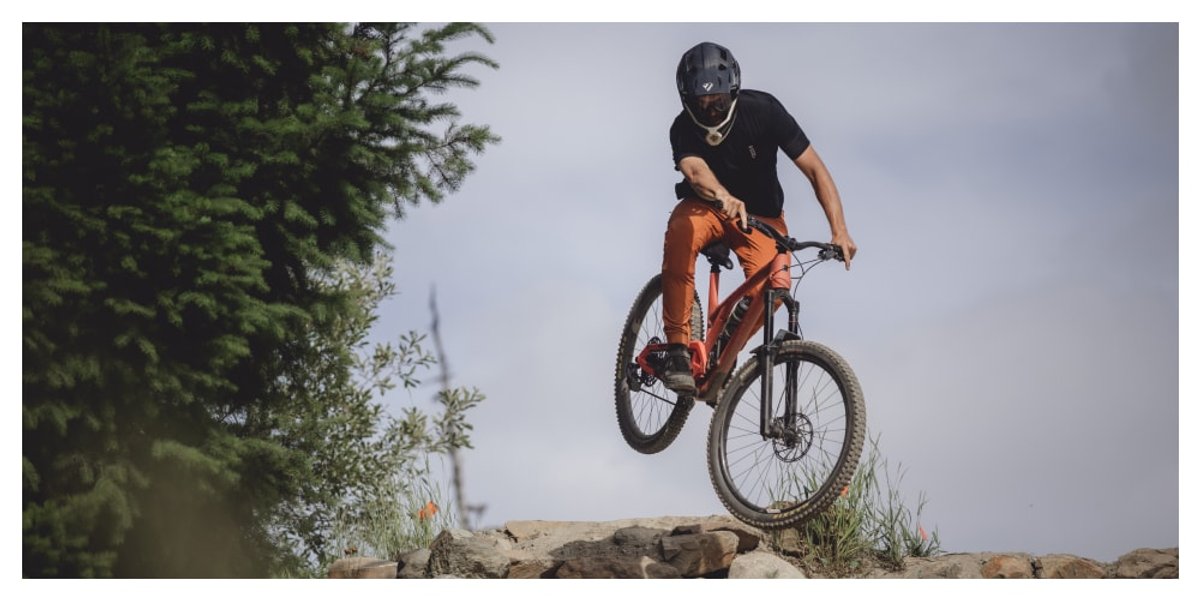
Enduro Bikes
Love the downs more than the ups? All-mountain and enduro MTBs do too. With massive travel of 160–180mm, these brawlers are masters of freeride and bike parks, soaking up monster features down the trail and appreciating the shuttle ride back to the top. They still hold their own on long climbs, which of course, are a large portion of enduro race days.
- Ride Quality: Smooth, plush, agile & ready to commit
- Geometry: Balanced, with a long wheelbase, slack front-end but steep seat tube for pedaling
- Best For: Black diamond trails and sometimes using chairlifts or shuttles for assistance
Buy an all-mountain or enduro bike if you can’t get enough berm slaps, ramps & gaps, big technical features, or riding unpredictable trails few others dare to drop into.
Fat Tire Bikes
Want to keep riding even when your local trails are covered in snow? You might be well served by a fat tire bike. These bikes have large tires that run at low pressure to distribute ground-contact over a larger area. This allows you to gain purchase on snow, sand, or other soft surfaces. Plus, they smooth out your ride substantially, so you don’t have to resort to full suspension.
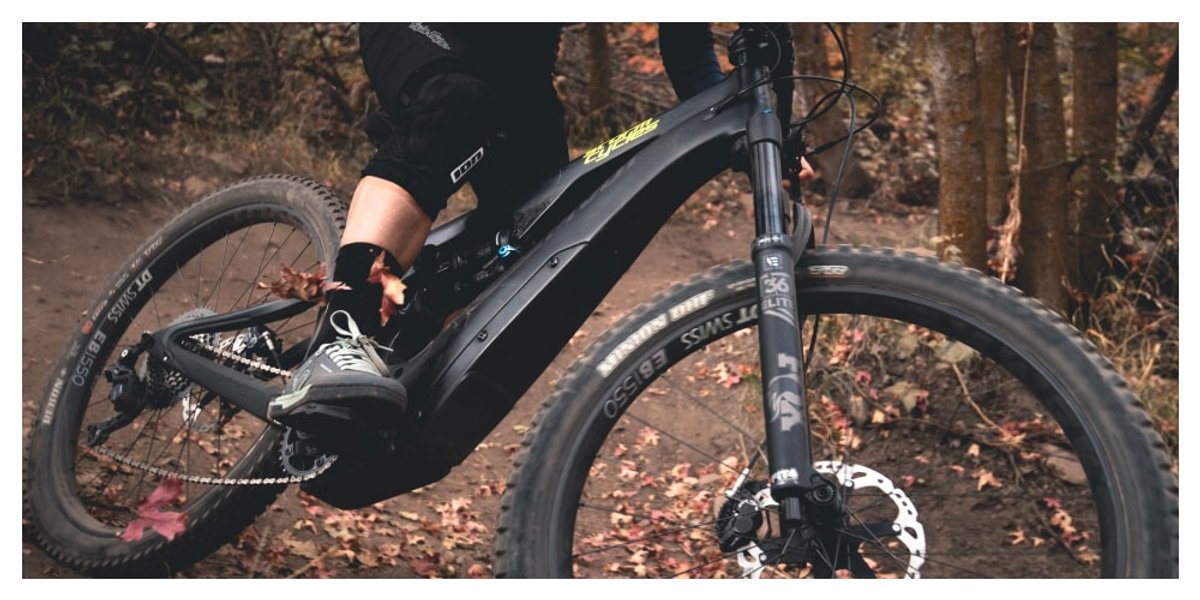
E-Bikes
Power up your miles and ride a bike with a battery-assisted motor for the extra juice to go faster and farther.
Choose an e-bike if you:
- Feel like you need a boost uphill.
- Want to go farther on your next ride.
- Like the idea of having a motor to keep up with faster friends.
- Don’t want to sweat too much on the way to your meeting.
Electronic Bikes can now be found in every category. The internal battery gives you an electronic assist for hills whether you’re on a mountain, road, or commuter e-bike.
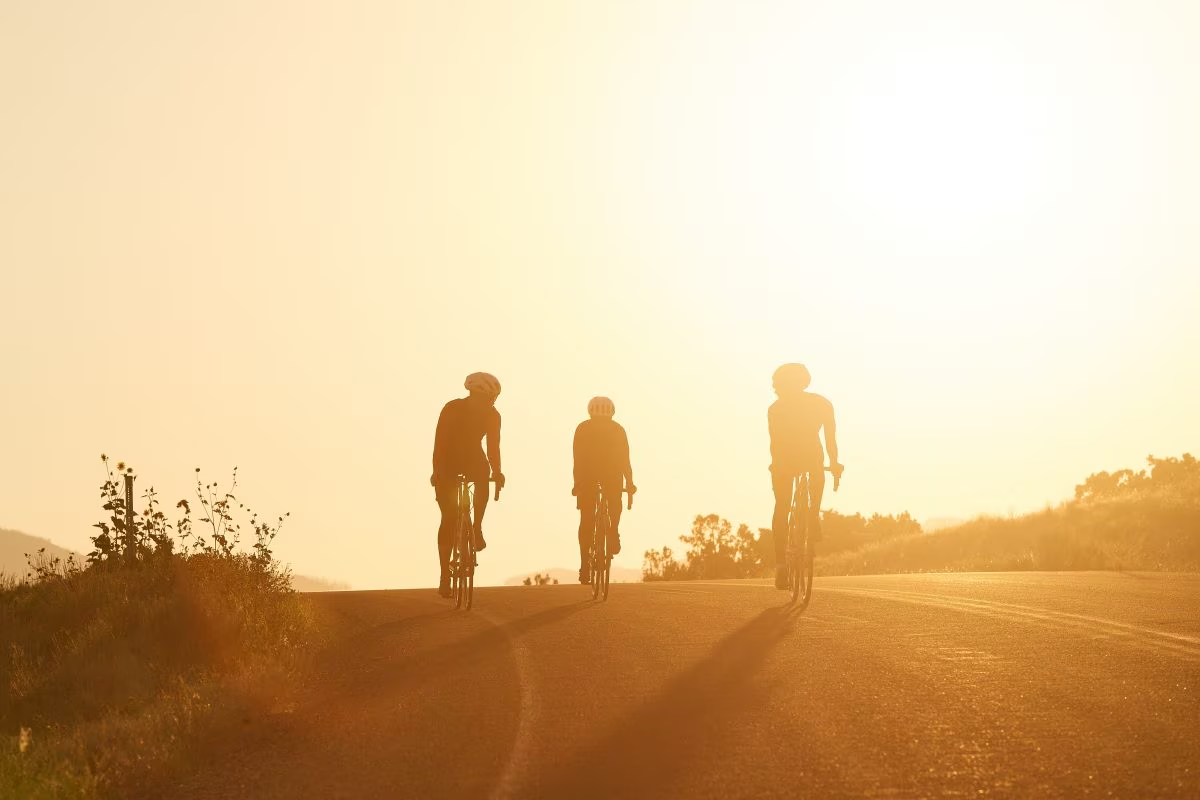
Road Bikes
You guessed it; these speedy machines are built for pavement. Lightweight, aerodynamic, and equipped with a healthy amount of gearing, road bikes are meant for optimal performance and efficiency over long, paved distances.
All-Road & Endurance Bikes
Designed for all-day riding over just about any road surface and terrain, all-road and endurance bikes are the ideal choices for most road riders. Their geometry is comfortable and stable, so you won’t feel like a pretzel after a long day in the saddle. But don’t let the comfort fool you; these machines are real road bikes. They’ll let you get up to speed and blast a fun pace at any time.
- Ride Quality: Versatile, stable yet swift & minimized road vibrations
- Geometry: Relaxed but still sporty
- Best For: Long, multi-hour rides over any road surface or terrain
Buy an all-road or endurance road bike if you aren’t speed-obsessed, you place a demand on comfort, and just want to ride.
Road Racing (Performance) Bikes
Road racing bikes are after one thing: performance at top-speed. And for some riders, that’s all that matters. Made from premium materials to be lightweight, rapid under acceleration, aerodynamic, and exceptionally nimble, these top-flight machines hunt for the podium from mile 1 to the finish.
- Ride Quality: Stiff & swift, with sharp handling at top speed
- Geometry: Aggressive & compact with a forward-feeling riding position
- Best For: Short or long racing events & fast-paced training rides
Buy a road racing bike if you have good joint flexibility to fit into its compact geometry, enjoy fast-paced group rides, and dream of fighting for the podium.
Gravel Bikes
Take a road bike off-road, and it’ll leave you under-biked. That’s where gravel bikes come in; their long wheelbase, stable geo, and room for wide, knobby tires give them traction on doubletracks and confidence to tackle rougher singletrack. You can also swap to a road tire setup if you want to log some time on pavement.
- Ride Quality: Smooth & less jittery compared to road bikes
- Geometry: Long, low, comfortable & stable to find control when weighed down with bike packs
- Best For: Groomed to rough doubletracks, mild singletrack & gravel racing & bikepacking events
Buy a gravel bike if you love escaping the city, have mixed-surface routes in your area, have an insatiable thirst for gravel adventures, or need the ultimate drop bar bike versatility and utility.
Commuter Bikes
The nature of the commuter bike is mostly dependent on the nature of the commute. If you’re heading across town on smooth, paved roads, a road bike with an upright fit may do the trick. If your journey has some combo of dirt, gravel, and pavement, you may want a commuter with wider tires or a flat bar for control.
Some commuter bikes have features that make your bike more like the car-replacement that it is: fenders to protect your clothes from water spraying off the tires, or places to attach racks for panniers so you can haul groceries back home.
E-bikes are now also popular for commuting because you save gas while also not getting too sweaty on the way to your important meeting.
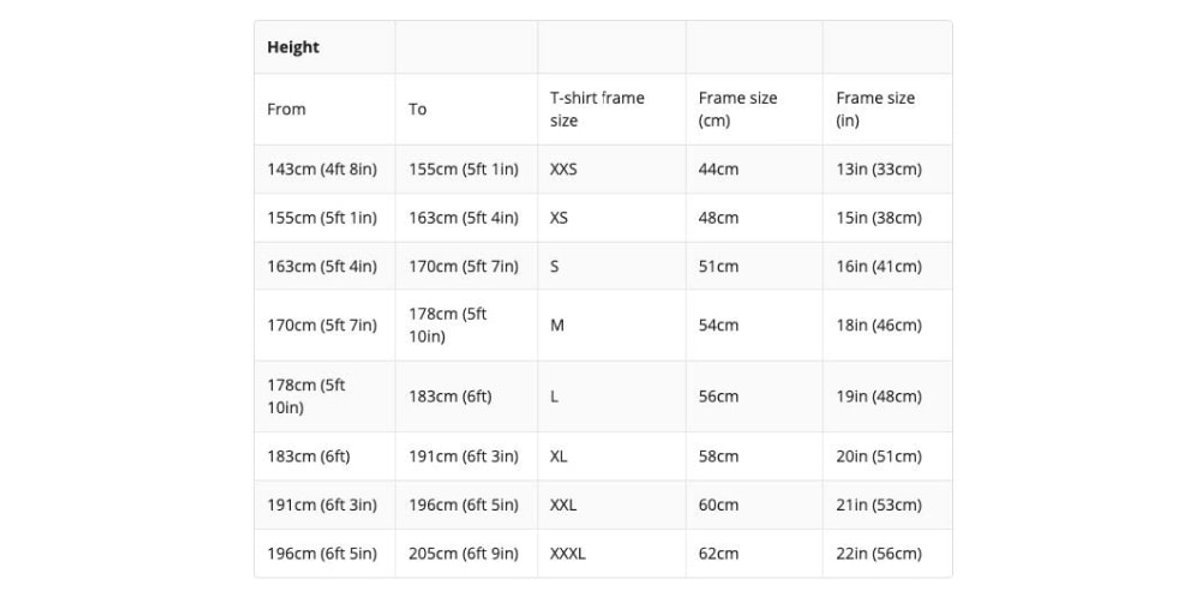
Key Considerations
Bike Size Chart & Bike Fit
Have you decided which bike type is for you? Awesome, now let’s make sure it fits. In general, your height is the best measurement at the start, but a few more measurements like inseam, upper and lower arm and leg lengths, and torso length help fine-tune your fit.
To get started check out our Bike Fit Calculator. Or chat with our Gearheads to review your measurements, get expert advice, and check out your bike options. Keep in mind that your bike size can vary by type of bike and by brand.
Frame Materials/Construction
Bikes are made primarily of steel, aluminum, or carbon fiber, with each having their own particular benefits.
- Steel frames tend to have a compliant, comfortable feel and are often less expensive than other materials. Steel is a great material for commuter bikes, touring bikes, and road bikes where comfort is paramount. Many people also prefer the vintage aesthetic of steel.
- Aluminum frames are light but also stiff. For this reason, aluminum mountain bike frames are best paired with suspension for a non-jarring ride. Aluminum road bikes are an excellent budget option.
- Most high-end mountain and road bikes are now made from carbon fiber. This material is extremely light with a compliant, comfortable feel.

Wheel Size
29in, 27.5in, 26in 700c? How do you decide?
Mountain bikes most commonly have 27.5in or 29in wheels. Larger (29in) wheels have a lower angle of attack, meaning obstacles strike the tire at a lower point than they would on a small wheel. This allows you to roll over obstacles more easily. Smaller (27.5in) wheels have their benefits, too. They accelerate a bit faster, corner more easily, and are stronger than 29in wheels.
- Choose a 29er for uphill-oriented mountain biking or rolling over rough terrain.
- Choose a 27.5in wheel if you want to prioritize maneuverability.
Most road bikes have a 700c wheel size. This measurement is the approximate diameter of the wheel in millimeters, but that’s not incredibly accurate. Since this is the primary road wheel size, you don’t have to worry too much about decisions here.
Accessories & Other Gear For Your Bike
Ready to ride? Here are the top accessories and upgrades we recommend.
Must-Haves For Your Kit
- Helmets: Road, gravel & XC helmets use the same general design and are meant to be fast, cool, and lightweight. Trail lids get deeper coverage in the rear, and full-face helmets offer maximum protection for enduro and freeride missions.
- Layers & Style: Depending on the season, choose a light, mid, or heavyweight kit to help thermoregulate and seal out the elements. Style options are plentiful, too, and you can roll anything from skintight aero kits to full baggies.
- Shoes: Connect with your pedals in ride-specific shoes to get the most performance. Sleek, carbon-soled road shoes transfer watts, while lugged soles give traction for gravel, XC, and trail. And flat-soled shoes grip the pins on platform pedals.
Biking Accessories To Know
- Tools: It’s a good idea to ride with rescue tools like tire levers, flat kits, inflators or mini-pump, and a quality mini-tool with bits that work with your particular bike.
- Hydro packs: Store extra water for longer, hotter days and tote layers, food, and tools with you in these versatile packs.
Top 3 Bike Upgrades
- Wheels: The best upgrade to make if you’re looking for a performance boost is a wheelset. Reduce weight, accelerate faster, and gain noticeable improvements in ride quality and durability.
- Components: From the drivetrain to the handlebar and seat post, upgrading components not only dials in your fit, but also helps you do more (i.e., bigger gearing for climbs, stronger brakes for descents, and dropper posts for off-road handling).
- Tires: Try new tread patterns and rubber compounds for grip in different conditions (i.e., tires that prioritize durability, rolling speed, or traction in slick conditions).
Take Your Kid
Start your tot off early with our kid-focused selection of balance bikes, then keep them rolling with gearing-equipped young-adult sizes. You’ll find the ride they need to get up to speed on the sidewalks or the mountain tops. Talk to our Gearheads for recommendations.
For help finding the right bike, size, or components, connect with a Gearhead by calling 1-800-409-4502 or using the chat feature.
FAQ
How much does a bike cost?
Bikes will range from about $1,500 to more than $15,000. If you’re just getting into it, top-of-the-line bikes could be overkill. Use the filter feature on our website to view only bikes in your preferred price range.
What is the first thing you should do when buying a bike?
When buying a bike, the first thing you should do is decide what kind of riding you want to do. Will you be road cycling, commuting, or mountain biking?
What month is best to buy a bike?
Big sales often line up with big holidays. Keep an eye out for discounts around Christmas or Memorial Day, for example.
